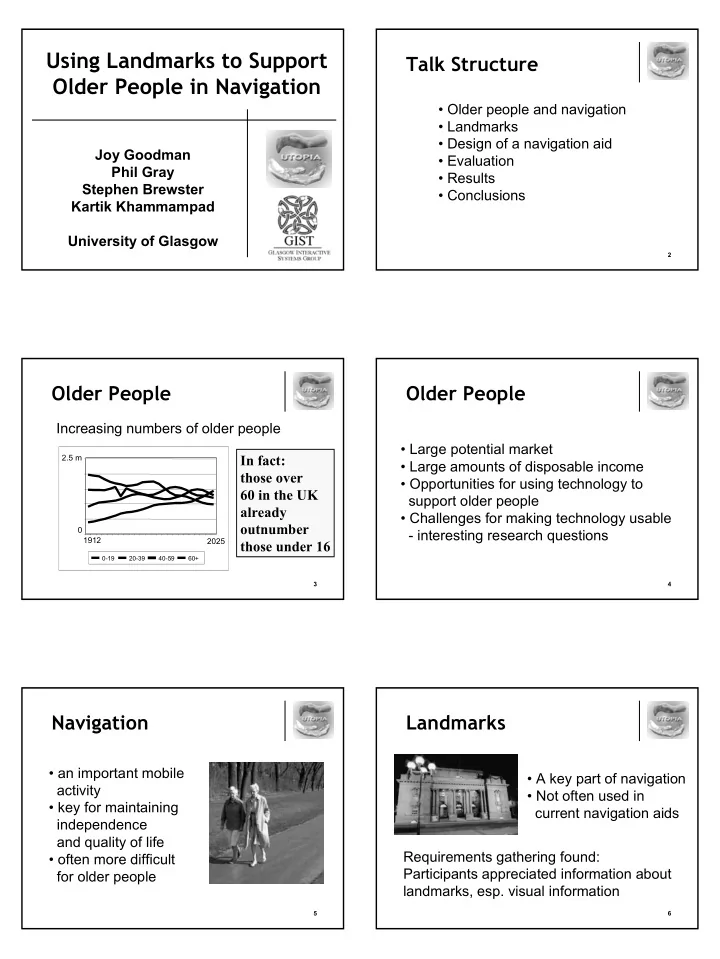

Using Landmarks to Support Talk Structure Older People in Navigation • Older people and navigation • Landmarks • Design of a navigation aid Joy Goodman • Evaluation Phil Gray • Results Stephen Brewster • Conclusions Kartik Khammampad University of Glasgow 1 1 2 2 Older People Older People Increasing numbers of older people • Large potential market 2.5 m In fact: • Large amounts of disposable income those over • Opportunities for using technology to 60 in the UK support older people already • Challenges for making technology usable outnumber 0 - interesting research questions 1912 2025 those under 16 0-19 20-39 40-59 60+ 3 3 4 4 Navigation Landmarks • an important mobile • A key part of navigation activity • Not often used in • key for maintaining current navigation aids independence and quality of life Requirements gathering found: • often more difficult Participants appreciated information about for older people landmarks, esp. visual information 5 5 6 6
Our Aim Design Prototype To develop: • Uses a series of landmarks • A pedestrian navigation aid • Information is given through • Basing navigation assistance around photographs, text and speech information about landmarks • Handheld computer • Easy to use by older people (Compaq iPAQ) 7 7 8 8 Design Design 9 9 10 10 Design Design 11 11 12 12
Design Considering Older Users In Design 13 13 14 14 Evaluation Participants Field experiment To determine age differences • observe actual behaviour in navigation: • in a real-world setting • 16 older participants (aged 63-77) • obtain some quantitative data • 16 younger participants (aged 19-34) Within subjects 2 conditions - device and a paper map 2 routes – both on the university campus 15 15 16 16 Results Results – time taken Mean Time Taken 35 Map Device 30 25 (Minutes) 20 Significant 15 effect of: 10 5 0 • age Younger Older • method Age Group Significant interaction effect: • Only older people benefit significantly from the device • With the device, older and younger perform comparably 17 17 18 18
Results Results Subjective workload - TLX Preference 5 Number of responses 20 4.5 Map 15 4 Device Subjective Rating 10 3.5 3 5 2.5 0 2 Strongly Prefer Map Indifferent Prefer Strongly 1.5 Prefer Map Device Prefer 1 Device 0.5 0 Which method did you find more useful? Mental Physical Temporal Effort Performance Frustration Demand Demand Demand Level 19 19 20 20 Results Conclusions Difficulties • Landmarks can be used effectively (challenges for further work): within pedestrian navigation aids • more accustomed to maps • Older people can use such a device • interface details without difficulty • maps give a better overall • Older people derive substantially picture of the route and area more benefit from it than younger people 21 21 22 22
Recommend
More recommend